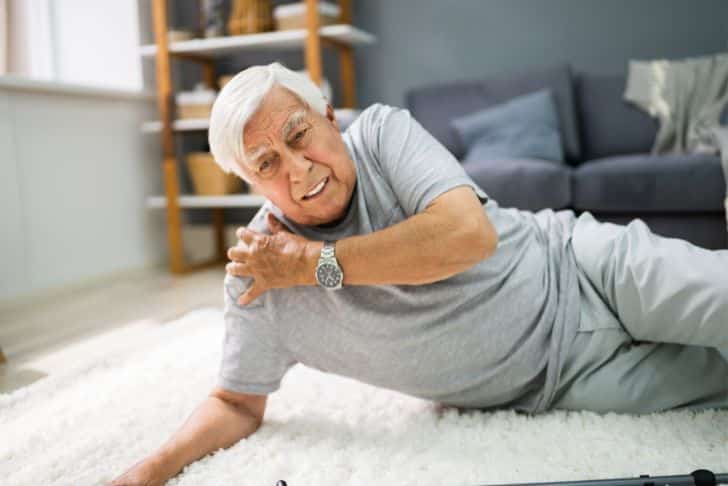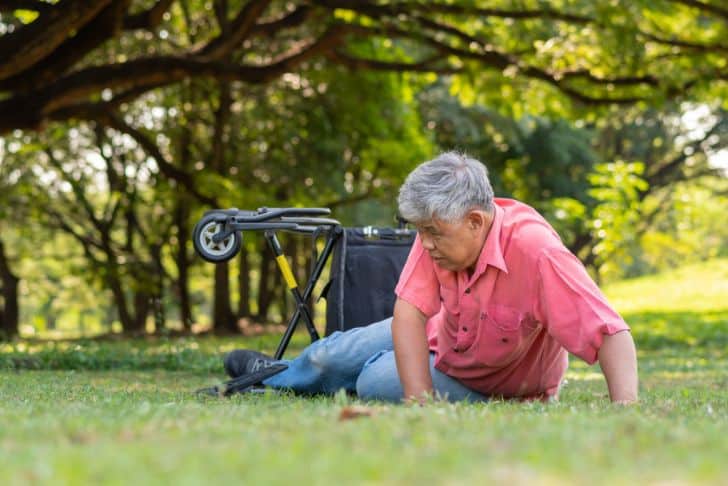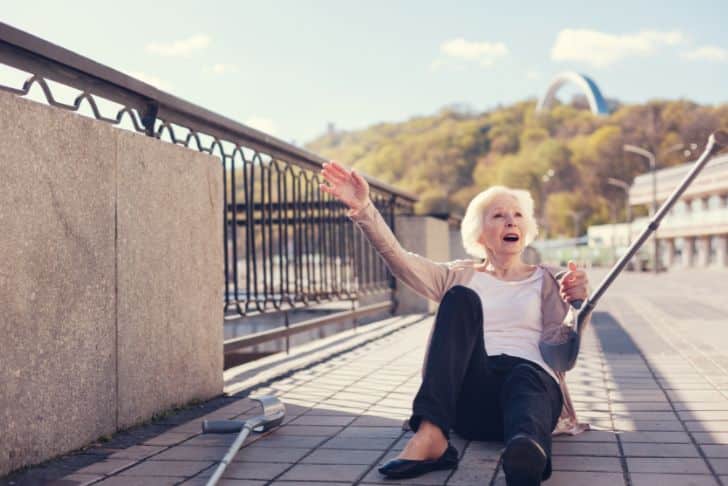“Effective Fall Prevention Strategies: From Occupation Therapy to Arranging Your Home” is all about securing your safety as you navigate through the golden years of life. The relevance of fall prevention gains prominence with age as physical changes and health conditions make falling incidents more likely. This article emphasizes making an appointment with your health care provider to strategize falling prevention, reviewing medications, and discussing past fall incidents. It introduces the utility of regular physical activities for improved strength, balance, coordination, and flexibility. In addition, it highlights how proper footwear and a hazard-free home can drastically reduce the risk of a fall.
Clear visibility using bright lights and night lights, coupled with the installation of assistive devices like handrails, non-slip treads, and grab bars, all contribute to a safer home environment. Furthermore, the unique perspective of an occupational therapist can reveal targeted strategies and identify necessary home improvements for fall prevention; truly, investing in fall prevention strategies is an investment in maintaining personal independence.
Understanding the Importance of Fall Prevention
Fall prevention is significantly important as you get older. This is due to physical changes and ongoing health conditions that could increase the likelihood of a fall.
Physical changes and health conditions conducive to falls
As you age, physical changes occur, including weaker muscles, brittle bones, slower reflexes, balance issues, and vision impairment, which can contribute to falls. Additionally, health conditions like arthritis, heart disease, blood pressure fluctuations, diabetes, and neurological issues also might increase fall risk.
Role of health care providers in fall prevention
Your healthcare provider plays a critical role in fall prevention. They can assist by discussing your risk level, suggesting appropriate fall prevention strategies, providing physical activity recommendations, and doing regular medication reviews. Their expertise can help avoid falls and assure you maintain an active and independent lifestyle.
Fall prevention as an investment in personal independence
Investing in fall prevention means safeguarding your freedom and self-reliance. By actively taking steps toward fall prevention, you’re not only avoiding potential injuries, but also ensuring that you retain the independence and quality of life you’ve enjoyed.
Role of Occupational Therapy in Fall Prevention
Among healthcare professionals, occupational therapists hold a special place as they work closely with you developing individualized fall prevention strategies.
Individualized fall prevention strategies
These strategies take into account your unique health conditions, physical capabilities, living situation, and daily routines to reduce the risk of falls. Such interventions might include specific exercises, home modifications, or assistive devices.
Identifying potential hazards in homes
Occupational therapists can help identify and mitigate potential hazards in your home. They can suggest modifications that can help create safer living spaces – from rearranging furniture to eliminate tripping hazards to improving lighting.
Training on use of assistive devices
They can also guide and train you in effectively using assistive devices like handrails, nonslip treads, raised toilet seats, and grab bars, offering you greater safety and convenience.

Physical Activity and Fall Prevention
The role of regular physical activity in fall prevention is pivotal. It helps improve your strength, balance, coordination, and flexibility, all of which reduce fall risks.
Importance of regular physical activity
Regular workouts can enhance your overall fitness and muscular strength, keeping you active, agile, and less likely to fall.
Types of exercises beneficial for fall prevention
Exercises like walking, strength training, yoga, tai chi, and water aerobics are particularly beneficial for fall prevention. These activities improve your strength, flexibility, balance, and spatial awareness.
Improving strength, balance, coordination, and flexibility to prevent falls
By performing these exercises regularly, you can bolster your functional capacity, enabling you to carry out daily activities more confidently and safely, thus preventing falls.
Effective Footwear for Fall Prevention
In terms of fall prevention, appropriate footwear has a significant role to play.
Choosing strong, flat shoes with nonskid soles
Such shoes provide good support and traction, considerably reducing the chances of slipping and falling.
Importance of well-fitted shoes
Ill-fitting shoes can lead to discomfort, imbalance, and even injuries — all of which increase the risk of falls. Therefore, it is important to wear shoes that fit well and are comfortable.
Risk of slipping and falling due to improper footwear
Shoes with smooth soles, high heels, or loose, worn-out footwear can lead to slipping, tripping, or missteps. By choosing the right footwear, you can substantially decrease the likelihood of falls.

Identifying and Removing Potential Home Hazards
Falls often occur at home due to various hazards that go unnoticed until it’s too late.
Awareness of common home hazards
By being aware of common home hazards such as boxes, wires, loose rugs, clutter, and uneven flooring, you can take steps to remove these items and prevent falls.
Steps to removing potential hazards
These could include keeping walkways clear, securing loose rugs with double-sided tape, fixing uneven areas on the floor, and arranging furniture to create clear pathways.
Importance of decluttering for fall prevention
A tidy, clutter-free home not only looks good but is also safer. It eliminates tripping hazards, making it easier for you to move around freely and safely.
Optimizing Home Lighting for Fall Prevention
Lighting is a key element when considering fall prevention at home.
Maintaining a brightly lit home
Brighter lighting helps you see more clearly, enabling you to easily navigate around your home.
Use of night lights to prevent falls
Installing night lights in hallways, staircases, and bathrooms can assist in preventing falls during the night when visibility is low.
Avoiding tripping hazards through proper lighting
Proper lighting is crucial in areas like stairs, bathroom, and kitchen, where the risk of falling is relatively high. By ensuring that these places are well lit, you reduce the chances of a trip or fall.

Use of Assistive Devices for Fall Prevention
Assistive devices are designed to provide support, stability, and confidence, immensely reducing the risk of falling.
Examples of useful assistive devices
These may include items like grab bars near toilets and in showers, handrails on both sides of stairwells, and nonslip treads on wooden stairs.
Proper installation and use of devices
Not only is having these devices important, but so too is installing them properly and using them correctly. This ensures they offer maximum support and safety.
Enhanced support and risk reduction through assistive devices
Ultimately, these devices can give you the boost of confidence and independence you need, allowing you to navigate your home safely and reduce your risk of falls.
Medication Review and Fall Prevention
A regular medication review is a ~quite important preventive measure in reducing fall risk.
Discussing medications with health care provider
Some medicines or their combinations may have side effects like dizziness or drowsiness that can lead to falls. Therefore, discussing your medications and their potential impacts with your healthcare provider is highly essential.
Potential risk of falls due to certain medications
Particular medications may increase your risk of falling, so understanding their possible effects is important. Being aware of this can help you and your healthcare provider make necessary adjustments to your medication routine if needed.
Importance of regular medication reviews
Regular medication reviews allow your healthcare provider to track your medication’s effectiveness, adjust doses, or change the medication if necessary, ensuring that you stay safe and healthy.
Recapping Past Falling Incidents for Prevention
Learning from past falling incidents is an effective way to forestall future ones.
Reviewing and analyzing past falls
Understanding the situations and conditions leading up to a past fall can provide valuable insights into how you might avoid similar incidents in the future.
Learning from past incidents
This process allows you to find patterns, identify potential hazards or risky behaviors, and take proactive steps to prevent future falls.
Preventing repeat falls
By learning from past incidents and making necessary changes, you can effectively avoid repeat falls, helping maintain your independence.
Investing in Fall Prevention
Investing in your fall prevention is an investment in your independence and quality of life.
Monetary cost of falls
The financial implications of falls can be significant, including medical costs and possible long-term care. Thus, preventing falls now can save you a lot in the future.
Benefits of investing in fall prevention
Investing in fall prevention methods, be it physical therapy, home modifications, or appropriate footwear, isn’t just about avoiding falls, but also about preserving your ability to live a fulfilling and independent life.
Viewing fall prevention as an investment towards independence
So rather than seeing fall prevention as a burden, recognize it as an investment towards your independence, well-being, and quality of life, enabling you to live on your own terms, without fear of falling.
